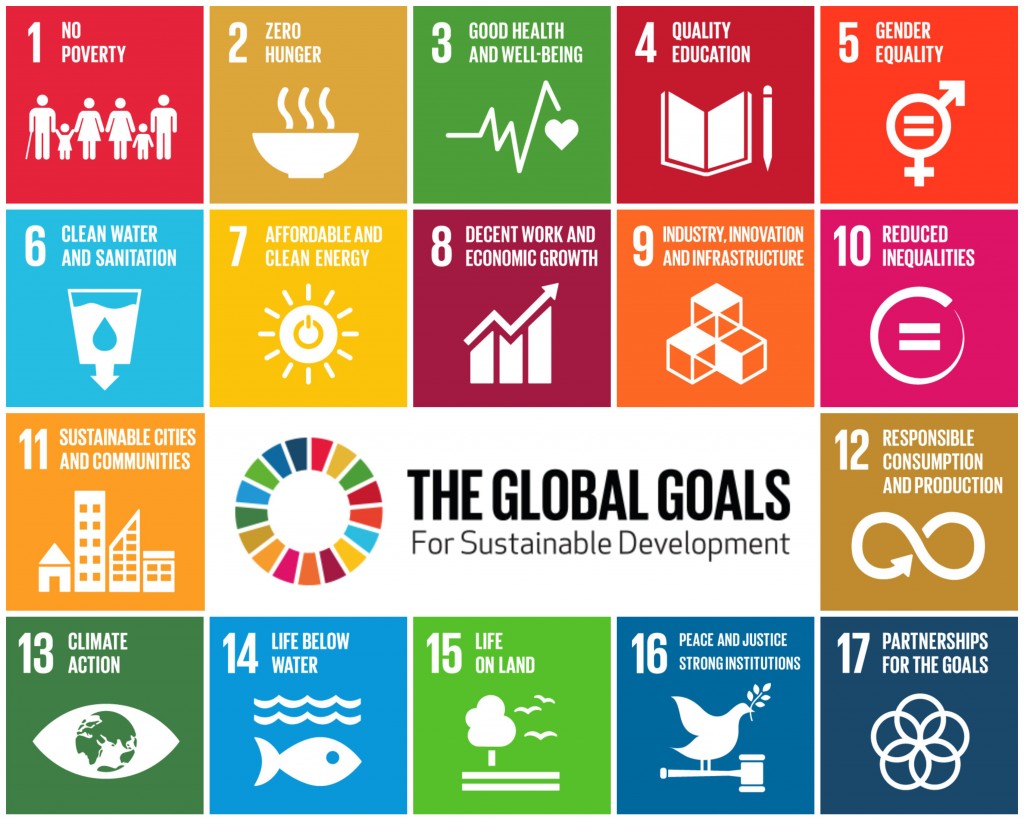
As a follow-up to the MDGs, the UN has developed 17 Sustainable Development Goals (SDGs), which will come into effect on January 1 2016. As with the MDGs, each SDG has specific targets, which can be found on the UN website, and a set of indicators to measure progress, which will be finalized by March 2016. This ambitious agenda has been proposed to shape the policies and actions of UN member states through to 2030:
- End poverty in all its forms everywhere
- End hunger, achieve food security and improved nutrition and promote sustainable agriculture
- Ensure healthy lives and promote well-being for all
- Ensure inclusive and equitable quality education and promote lifelong learning opportunities for all
- Achieve gender equality and empower all women and girls
- Ensure access to water and sanitation for all
- Ensure access to affordable, reliable, sustainable and modern energy for all
- Promote inclusive and sustainable economic growth, employment and decent work for all
- Build resilient infrastructure, promote sustainable industrialization and foster innovation
- Reduce inequality within and among countries
- Make cities inclusive, safe, resilient and sustainable
- Ensure sustainable consumption and production patterns
- Take urgent action to combat climate change and its impacts
- Conserve and sustainably use the oceans, seas and marine resources
- Sustainably manage forests, combat desertification, halt and reverse land degradation, halt biodiversity loss
- Promote just, peaceful and inclusive societies
- Revitalize the global partnership for sustainable development
What makes the SDGs different from the MDGs? The most obvious answer is that there are more than double the number of SDGs than there are MDGs, but there are more differences than just that! More SDGs translates to the UN being able to tackle a more broad range of issues related to development. The MDGs were grounded in anti-poverty, however, they often failed to address the root causes of poverty, opting instead to treat the symptoms. The SDGs aim to address the systemic issues that allow poverty to persist, including human rights, governance, peace and stability. The SDG targets also move beyond poverty, examining issues such as climate change and sustainable consumption, which will impact everyone, regardless of their socioeconomic status.
The MDGs were primarily developed by member countries of the Organization for Economic Co-operation and Development and donor agencies focusing their efforts on low and middle-income countries. The process for determining the MDGs barely involved those who were most affected by their targets. The SDGs, however, have come out of international negotiations where low and middle-income countries were granted input. Furthermore, the SDGs are regarded as universal, applying to all countries and actors, rather than creating a divide between “rich donors” and “poor recipients.”
More opportunities for partnership will (hopefully) be a product of, and a driver of, the SDGs. These include public-private partnerships, trade partnerships, global partnerships, local partnerships, and most importantly equitable partnerships. In order to meet the ambitious targets set out in the SDGs, a multidisciplinary and multi-stakeholder approach will be vital.
The MDGs are about to expire, and though there has been considerable progress made on many of the targets, there is still much work to be done. About 1 billion people still live on less than $1.25 per day worldwide, gender inequality persists as women worldwide continue to face discrimination in their everyday lives and over 800 million people still suffer from hunger. The SDGs hope to finish the job of the MDGs, and ensure that this time around, no one is left behind. Over the next 15 years, we are excited to see how the SDGs will impact global health, as health is a key outcome of development.

